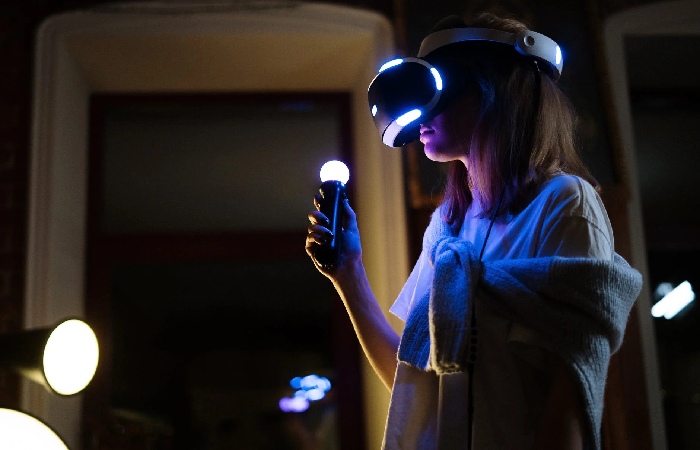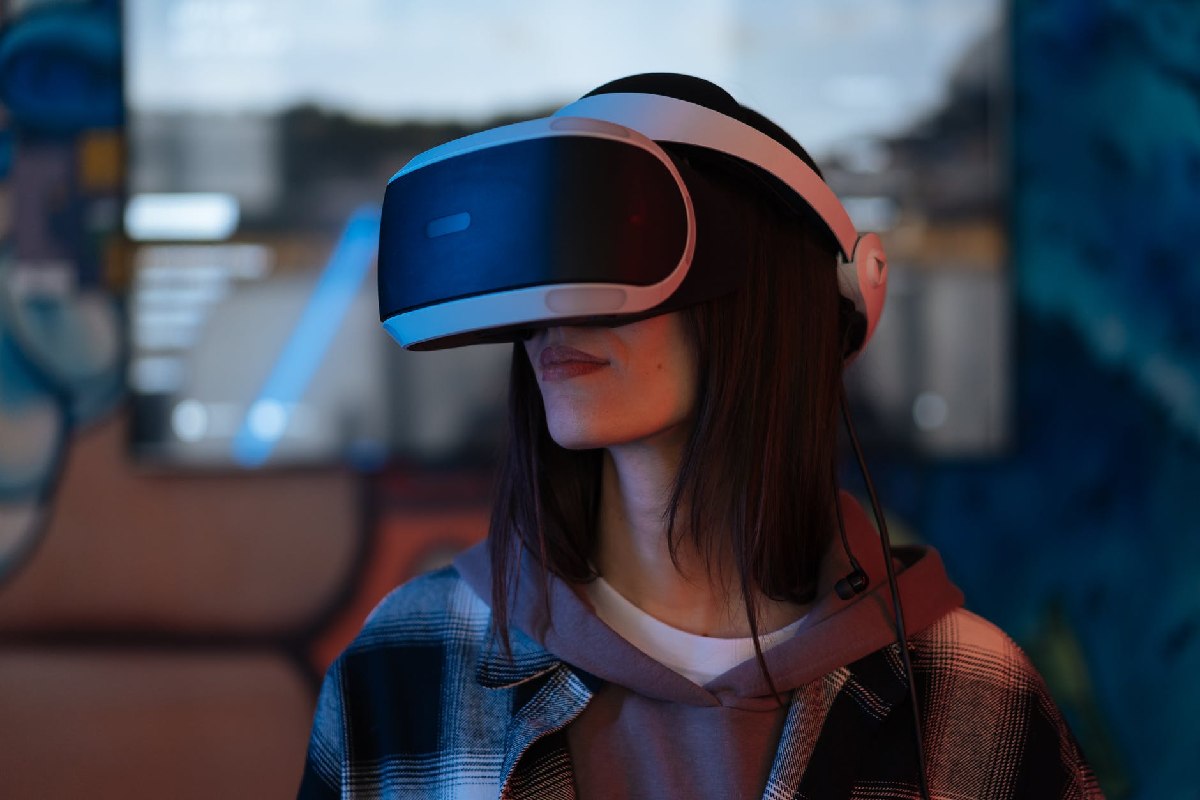Table of Contents
What is Virtual Reality (VR)?
Virtual Reality (VR) uses pc generation to create a simulated surrounding. Unlike conventional person interfaces, VR locations the user internal and revel in. Instead of viewing a display screen in front of them, users immerse. They can interact with 3D worlds by simulating as many senses as possible, including vision, hearing, touch, and scent. The best limits to close to-actual VR reviews are content material availability and reasonably-priced computing electricity.
What’s the Difference Between Virtual Reality and Augmented Reality?
Virtual Reality and Augmented Reality are two facets of an identical coin. You should think about Augmented Reality as VR with one foot in the actual global: Augmented Reality simulates synthetic objects inside the existing environment; Virtual Reality creates an artificial surrounding to inhabit.
In Augmented Reality, the computer uses sensors and algorithms to decide the placement and orientation. AR era then renders the 3-D pictures as they could appear from the digicam’s perspective, superimposing the pc-generated pics over a person’s view of the actual international.
In Virtual Reality, the pc makes use of comparable sensors and math. However, the person’s eyes locate inside the simulated environment rather than finding a real digital camera within physical surroundings. If the person’s head turns, the portraits react accordingly. Rather than compositing virtual objects and an actual scene, the VR era creates a powerful, interactive global for the person.
Virtual Reality Era

Human beings are visible creatures, and the show era is often the single most significant difference between immersive Virtual Reality systems and traditional person interfaces. Virtual reality’s most at once-recognizable factor is the head-mounted display (HMD). For instance, CAVE computerized virtual environments actively display digital content onto room-sized screens. But, while they’re a laugh for humans in universities and massive labs, patron and industrial wearables are the wild west.
With an assortment of emerging hardware and software program alternatives, the destiny of wearables is unfolding, however, but unknown. Concepts, including the HTC Vive Pro Eye, Oculus Quest and Playstation VR, are main the way; however, gamers like Google, Apple, Samsung, Lenovo, and others may surprise the industry with new stages of immersion and usefulness. Whoever comes out ahead, the simplicity of buying a helmet-sized tool that may work in a dwelling-room, workplace, or manufacturing facility floor has made HMDs centre degree concerning Virtual Reality technologies.
Virtual Reality and the Significance of Audio
Convincing Virtual Reality packages require extra than just graphics. Both hearing and vision are critical to someone’s sense of the area. In truth, people react faster to audio cues than to visual cues. Therefore, correct environmental sounds and spatial traits are required to create immersive Virtual Reality studies. These lend a compelling feel of presence to a virtual international.
What are the Benefits of AR besides VR in Education?
Earlier searching into a number of the benefits of virtual reality in training permit’s define what digital truth is and how it differs from augmented truth. AR is used as an intelligent tool to mission a layer of instructional textual content and lesson-suitable content on top of a person’s actual environment, imparting college students with interactive and significant studying reviews. VR creates a wholly digital environment, a 360-diploma, immersive user experience that feels actual. In a VR putting, college students can have interaction with what they see as if they have been without a doubt there.
In addition to presenting college students with immersive mastering experiences, other benefits of digital truth in education encompass the ability to inspire students’ creativity and spark their imaginations. And this may encourage them to discover new academic hobbies. AR and VR in schooling additionally enable college students suffering from apprehending challenging theoretical concepts. For instance, thru AR, geometry students can check out three-D geometric forms from more than one view; they can rotate a document to see it from specific angles and even view it from the interior. The benefits of virtual fact in education pass beyond academics as nicely to encompass cultural competence, the capacity to recognize any other man or woman’s tradition and values—an crucial talent in nowadays interconnected, worldwide society.
Growing proof suggests that AR and VR in schooling, in addition to the aggregate of each technology called combined fact, can enhance student results, too. And AR and VR can assist with reminiscence retention and remember, as well—EdTech reviews on a recent examine that indicates a boom in retention of almost nine per cent for college kids who learned in an immersive surrounding, including VR.
Conclusion
Virtually reality will diversely enrich and revolutionize our world in many regions. It gives new opportunities to apprehend and revel in records, towns or landscapes. Moreover, there are infinite captivating VR answers in the vicinity of advertising and PR, which encourage your clients.
Also Read: What is a Wide Area Network (WAN)? – Function, Difference, and More
ALSO READ : HARTAL
ALSO READ : NETWORK PROTOCOOL

